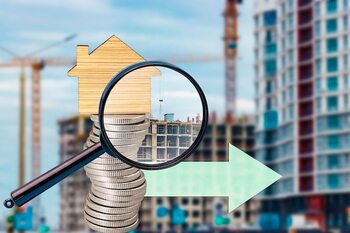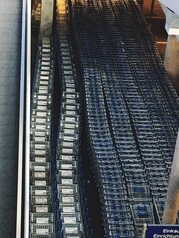The impact of the environment on the valuation of your home

The location of your home not only defines your lifestyle but also directly influences its appreciation. In Costa Rica, the difference between living in a rural or urban area can leave a significant mark on the value of your property. This article explores how the environment impacts the appreciation of your home, providing valuable information for those looking to maximize their investment. Discover the advantages and disadvantages of each option and make informed decisions to ensure a prosperous future.
1. The importance of location in the real estate market
Location is one of the most determining factors in the real estate market. A home situated in an area with access to essential services such as schools, hospitals, supermarkets, and public transportation tends to have a higher value than those in less developed areas. Additionally, proximity to recreational spaces, parks, and shopping centers adds appeal to the environment, further increasing the property's value. In this sense, families often prioritize these aspects when choosing a place to live, which can result in higher demand for well-located properties.
Likewise, location influences not only the current value of a home but also its potential for future appreciation. Urban areas tend to experience steady growth due to investment in infrastructure and economic development. On the other hand, rural areas may offer tranquility and nature but often face challenges such as lack of access to services and job opportunities. Understanding these dynamics is crucial for those looking to maximize their investment; wisely choosing the place where a home is purchased can be the key to ensuring sustainable appreciation over time.
2. Urban environments: advantages and disadvantages
Urban environments present a series of advantages that make them highly attractive for those seeking a home. Firstly, proximity to essential services such as schools, hospitals, and shopping centers can significantly ease daily life. Moreover, job opportunities tend to be more abundant in cities, which can translate into a better income level for their inhabitants. Urban infrastructure is also usually more developed, providing access to efficient public transportation and various entertainment and cultural options. These characteristics not only improve the quality of life but also tend to increase the value of properties located in these areas.
However, living in an urban environment is not without disadvantages that can negatively influence both daily experience and home valuation. The high cost of living is one of the biggest drawbacks; housing prices tend to be high due to constant demand. Additionally, noise and environmental pollution can affect the health and well-being of residents. Traffic congestion and the stress associated with a fast-paced lifestyle are other factors that may lead some individuals to seek alternatives in rural or suburban areas. Thus, although urban environments offer numerous advantages, it is crucial to consider these negative aspects when evaluating the impact on home valuation.
3. The tranquility of the countryside: a hidden attraction
The tranquility of the countryside has become a hidden attraction that many seek when valuing their home. Life in a rural setting offers a unique serenity, away from the hustle and bustle of the cities. This lifestyle not only promotes a healthier environment but also connects residents with nature, providing opportunities to enjoy outdoor activities and a more relaxed pace of life. These characteristics can significantly enhance the perceived value of a property, as more and more people prioritize peace of mind and well-being.
Additionally, the growing trend towards telecommuting has led many to reconsider their housing options. The ability to work from home allows individuals to choose rural spaces without sacrificing their professional careers. This has resulted in an increase in demand for properties located in less urbanized areas, which could further drive up their value. In this sense, investing in a home in the countryside not only represents a connection to a more tranquil lifestyle but also a smart strategy for those looking to secure their long-term investment and benefit from the growth of the rural real estate market.
4. Factors that influence rural appreciation
Rural surplus value is influenced by various factors that can enhance or limit the value of a property in less urbanized environments. One of the most significant aspects is the accessibility and available infrastructure in the area. The quality of the roads, proximity to basic services such as schools, hospitals, and supermarkets, as well as access to public transport routes, are determining elements that buyers consider when evaluating a property. The better the connection of the rural area to urban centers or strategic points, the greater its potential for appreciation.
Another key factor is the natural environment and the quality of the surrounding landscape. Properties that are surrounded by scenic beauty —such as mountains, rivers, or forests— tend to have an additional appeal that can translate into an increase in their value. Furthermore, current trends towards a more sustainable lifestyle connected to nature have led many buyers to value rural spaces as viable living options. Lastly, local policies regarding urban development and environmental conservation should be considered; regulations that promote the maintenance of the natural environment can increase property values by ensuring that there are no excessive developments that affect their attractiveness.
5. Investment in infrastructure: how does it affect your home?
Investment in infrastructure is a crucial factor that can transform the landscape of a community and, therefore, the valuation of the homes located within it. When new roads, hospitals, schools, or shopping centers are developed in an area, access and quality of life improve significantly. These changes not only facilitate mobility and access to essential services but also attract new residents and businesses. As a result, nearby properties tend to increase in value due to the demand generated by these improvements.
Additionally, infrastructure also plays an important role in the overall perception of the area. A neighborhood well-equipped with modern facilities and proper maintenance tends to be more attractive to potential buyers. This means that if your home is located near planned or ongoing infrastructure projects, you could benefit from an increase in its value as these initiatives are realized. Therefore, being aware of urban development plans and public investments can be a key strategy to maximize the value of your property in the future.
6. Current trends: urbanization vs. ruralization
Urbanization and ruralization are two current trends shaping the real estate market in Costa Rica. Urbanization, characterized by the growth of cities and the concentration of services, attracts those seeking comfort, access to modern infrastructure, and job opportunities. This phenomenon has driven up property values in metropolitan areas, where demand exceeds supply. However, living in a city also comes with disadvantages, such as the rising cost of living and urban congestion issues, which can be determining factors for some buyers. On the other hand, ruralization is gaining ground among those seeking a quieter and more sustainable lifestyle. More and more people are moving to rural environments in search of larger spaces, contact with nature, and a smaller ecological footprint. This shift is creating new opportunities for the rural real estate market, although its valuation can be more variable due to factors such as distance to urban centers and basic services. Thus, both urbanization and ruralization present advantages and challenges that must be considered by those wishing to maximize the value of their home based on the lifestyle they prefer to adopt.
7. The impact of access to public services on valuation
Access to essential public services such as drinking water, electricity, sewage, and transportation is not only crucial for the quality of life of residents but also plays a fundamental role in property valuation. Areas with adequate infrastructure and connectivity tend to attract more buyers and investors, which in turn drives up real estate market value. In Costa Rica, where urban development has intensified in recent decades, properties located near these services often experience an increase in their appreciation, becoming more attractive options for those looking to settle or invest. On the other hand, lack of access to public services can be a significant obstacle to property valuation. Rural or less developed areas may offer lower initial prices; however, the absence of basic infrastructure can discourage potential buyers. This means that owners in these locations may face challenges when trying to sell their properties or see their value stagnate or even decrease over time. For this reason, considering the impact of access to public services is essential for anyone interested in maximizing the appreciation of their home and securing a solid long-term investment.
8. How tourism influences rural properties
Tourism has a significant impact on the valuation of rural properties, especially in a country like Costa Rica, where natural beauty and biodiversity attract visitors from around the world. When a rural area becomes a popular tourist destination, an increase in interest in local properties is often observed. This can lead to a rise in market prices, as buyers see these properties not only as homes but also as opportunities for profitable investments through vacation rentals or the development of small businesses related to tourism. The arrival of tourists can revitalize areas that were once overlooked, creating new demand that elevates their value.
However, this phenomenon is not without challenges. The growth of tourism can transform the original character of rural communities, which could negatively affect the local experience and the quality of life of its residents. Moreover, the pressure on natural resources and local infrastructure can result in unwanted changes for those who have lived there for generations. Therefore, it is crucial for owners and developers to focus on a sustainable balance between tourism growth and the preservation of the natural and cultural environment. By doing so, not only is the current value of rural properties protected, but their long-term appeal to future buyers and investors is also ensured.
9. Price comparison: urban areas versus rural areas
The price comparison between urban and rural areas reveals significant differences that can impact the decision to buy or sell a property. In urban areas, access to services such as schools, hospitals, and public transportation tends to raise housing prices. The constant demand in these areas, driven by proximity to workplaces and recreational activities, contributes to an increase in valuation. However, this environment also comes with a higher cost in terms of daily living, which can limit the budget of many families.
On the other hand, rural areas offer a more affordable alternative in terms of housing prices. A larger space can often be found at a significantly lower cost. Additionally, living in the countryside usually implies a quieter lifestyle and a connection to nature. However, it is important to consider that this tranquility may have its drawbacks; the lack of infrastructure and basic services could affect both the quality of life and the potential appreciation of the property in the long term. Therefore, when evaluating where to invest or settle down, it is essential to weigh these advantages and disadvantages to make strategic decisions that maximize the value of the chosen home.
10. Strategies to increase your home's value based on its location
To increase the value of your home based on its location, it is essential to understand the specific characteristics of the neighborhood in which you reside. Properties located in areas with access to essential services such as schools, hospitals, and shops tend to appreciate more quickly in value. Consider making aesthetic and functional improvements that align with local demand; for example, if you live in an area where ecotourism is on the rise, investing in sustainable gardens or solar panels can make your property more appealing to buyers interested in an eco-friendly lifestyle. Additionally, proper maintenance of the home and compliance with local regulations not only preserve its condition but can also enhance its appeal.
Another key aspect is to foster a good relationship with the community and actively participate in neighborhood initiatives. A safe and cohesive environment can be a great attraction for future buyers. Creating community spaces or participating in local activities can improve the perception of the area, which positively impacts property prices. Additionally, consider seeking advice on urban projections and future development plans; being aware of projects such as new infrastructure or improvements in public transportation can provide you with a competitive advantage when making decisions about your home. Investing time and resources to enhance the unique attributes of your location is an effective strategy to maximize the value of your property.



